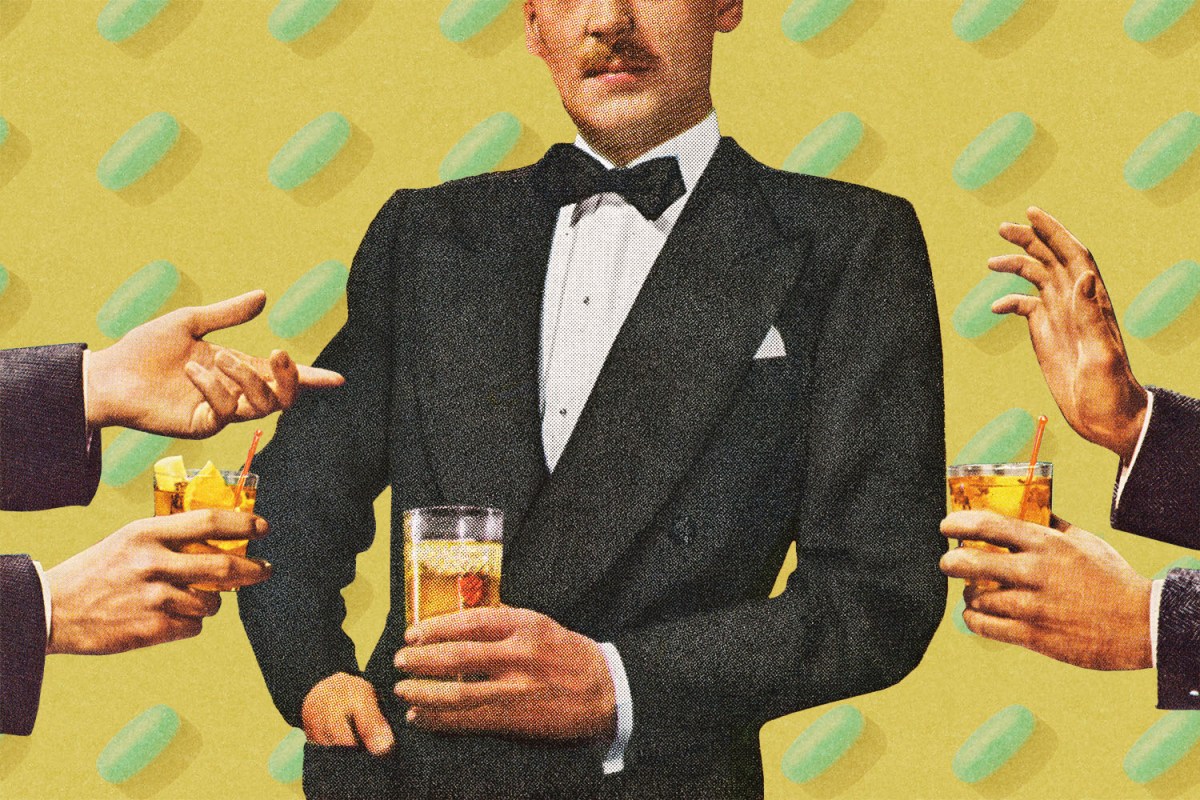For a period of time, my college produced a monthly newsletter that could only be found in bathrooms around campus. It hung from the inner partition of each stall, and was called the Stall Seat Journal. (The colloquial term for this sort of periodical is “toilet paper.” Do what you will with that information.)
Because school was full of rotten 20-somethings who drank beer for breakfast, the Stall Seat Journal more or less functioned as a public health pamphlet. It reminded students to get more sleep, proposed techniques for limiting stress during midterms and often offered takes on binge-drinking culture around campus. My friends and I used to chuckle about some of the bulleted points:
- Don’t drink when hungry, angry, lonely or tired (the HALT rule)
- 60% of your classmates keep track of their alcohol consumption
- 49% of those classmates report having less than four drinks per outing
- A single red Solo cup actually holds more beer than a 12-ounce can
- Alcohol “increases susceptibility to negative self-perception”
We knew enough not to question that last one. No one was really marching into the library on a Sunday morning with any leftover pride. But for whatever reason, we continuously stiff-armed this odd publication’s noble efforts to save our weekends. The Stall Seat Journal would recommend a checklist of forward-thinking advice — eat before drinking, alternate each alcoholic drink with water, try to limit consumption to one drink an hour — like a parent yelling “Make good choices!” as we ran out the door, and we’d inevitably ignore it all.
Which is a real shame, considering that short of not drinking at all, those basic, RA-written tips constitute a worthy defense against hangovers. I should’ve adopted those best practices a little earlier; my hangovers have only grown in intensity and frequency in the near-decade since my dirtbag days.
If you’ve scrolled through Instagram recently, you’ve probably been targeted with an advertisement by one of a half-dozen brands claiming to have engineered a drink, multivitamin or pill for “hangover relief.” These brands stop just short of anointing their product an elusive cure; instead, they seduce with clever copywriting. Like: “get back to feeling good after a night out” or “outsmart a rough morning after” or “lend your liver a hand.”
There’s one particularly obvious reason these products don’t deserve your blind faith. Unlike a brand that pedals denim or wall prints, you’re unlikely to just stumble upon a hangover remedy while scrolling through social media. Think about it. If a private lab had cracked the code, their products would be selling like hot cakes, and you and all your friends would be consuming it before and after a night out, as opposed to loading up on carbs or guzzling electrolytes.
And yet, it’s understandable that the likes of The Plug Hangover Drink, ZBiotics Probiotic Drink, Cheers After-Alcohol Aid, Blowfish for Hangovers and the Nourished Party Proofed Gift Box are difficult for millennial and Gen Z consumers to resist. The ads are colorful and empathetic (bright-hued UX and winky, young-person-speak — “Ever hear of an Irish hello?” — doesn’t seem to be going away, no matter how trite the combo has become over the last seven years or so), and the price, while sometimes steep, can seem justifiable in the context of a big night.
A recent profile by The New York Times detailed the rising costs of a night out on the town. “Nightlife inflation,” propelled by rising supply costs, labor shortages and a flailing industry determined to get back on its feet, has made triple-digit-outings a regular occurrence for partiers. And if you’ve already spent $100 on drinks, what’s another $25 for a tablet that could prevent the following day from becoming a total wash? Give this spring and summer whatever stupid, post-pandemic moniker you want — people will be out in droves again. For many, the idea of cocktails without consequences is intoxicating.
Unfortunately, though, it just isn’t that simple. Our attraction to hangover cures and remedies stems in part from a collective, casual assumption that a hangover is a singular malady, with an on/off switch. You wake up with a hangover, it gets better as the alcohol slowly filters out of your system, and eventually the torture subsides. But the term “hangover” is really just a catch-all for smorgasbord of unsettling reactions that occur within the body after a night of drinking.
Alcohol is a mortal enemy of good sleep. (I wrote about my experience with rock-bottom WHOOP stats after having one too many drinks here.) It causes your digestive system to go absolutely haywire, by irritating the stomach lining and fiddling with acid production in the gastrointestinal tract; it activates the body’s hormone response system for no reason — ever woken up especially sweaty, or had trouble calming your heart the morning after? — which tends to ramp up anxiety in kind; and yeah, it’s unmatched at giving you an old-fashioned “fuck you” headache.
Hangover remedies tend to reduce these reactions to one key compound: acetaldehyde. It’s extremely toxic. Over many years, it’s capable of damaging your DNA, which increase your chances of developing cancerous tumors. In the short term, though, it’ll just take its sweet time leaving the body. Enzymes that largely originate in the liver are tasked with converting acetaldehyde into waste (acetic acid). It’s a taxing, physiologically imperfect process — and the reason you’ve likely told a friend at some point in your life “I’m never drinking again.”
Modern “cures” are geared at adding dynamic bacteria or herbal compounds to this equation, to ease the massive assignment you’ve foisted onto your vital organs. Peel away all the flashy ads, and there is some evidence to suggest that this could help take the edge off in the morning.
The critical takeaway, though, is that acetaldehyde assistance is not the be-all, end-all when it comes to eliminating (or preemptively preventing) a hangover. Keep in mind that once the body degrades acetaldehyde, it has to knock out formaldehyde, too (derived from highly-toxic methanol, while acetaldehyde comes from ethanol), which is also capable of contributing to hangover symptoms. “Lending the liver a hand” sounds elegant, but what of the greasy food you ate while drunk? What about the fact that you slept three less hours than usual, with an elevated respiratory rate and skin temperature? Or how about the fact that alcohol is a natural diuretic, and pulled every lost drop of liquid you had left, so now you’re waking up with a bone-dry throat and a stiff back?
Ultimately, today’s hangover remedies work best in tandem with yesterday’s elementary tenets of safe, smart drinking. You know: the sort of stuff you’d read while sitting in a stall as sophomore in college. As it turns out, alternating beers with waters is a very good idea. So is avoiding “dark” liquors (which are high in toxic congeners), like tequila and whiskey.
As you age and hangovers get worse (or as you perceive them to get worse — the science is iffy on that front), it’ll be tempting to find quick, Add-to-Cart refuge online. Spending your hard-earned dollars on such remedies is your call. But then, so is taking it a little easier on a big night after a long week. This spring and summer, however long overdue, I’m planning to heed to the wise words of the Stall Seat Journal.
Whether you’re looking to get into shape, or just get out of a funk, The Charge has got you covered. Sign up for our new wellness newsletter today.


















